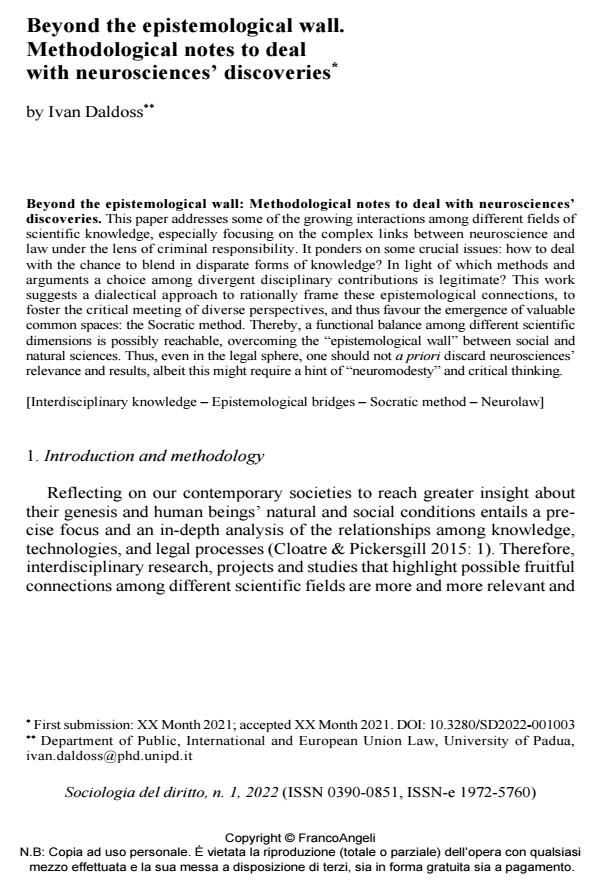Beyond the epistemological wall. Methodological notes to deal with neurosciences’ discoveries
Journal title SOCIOLOGIA DEL DIRITTO
Author/s Ivan Daldoss
Publishing Year 2022 Issue 2022/1
Language English Pages 18 P. 53-70 File size 259 KB
DOI 10.3280/SD2022-001003
DOI is like a bar code for intellectual property: to have more infomation
click here
Below, you can see the article first page
If you want to buy this article in PDF format, you can do it, following the instructions to buy download credits

FrancoAngeli is member of Publishers International Linking Association, Inc (PILA), a not-for-profit association which run the CrossRef service enabling links to and from online scholarly content.
This paper addresses some of the growing interactions among different fields of scientific knowledge, especially focusing on the complex links between neuroscience and law under the lens of criminal responsibility. It ponders on some crucial issues: how to deal with the chance to blend in disparate forms of knowledge? In light of which methods and arguments a choice among divergent disciplinary contributions is legitimate? This work suggests a dialectical approach to rationally frame these epistemological connections, to foster the critical meeting of diverse perspectives, and thus favour the emergence of valuable common spaces: the Socratic method. Thereby, a functional balance among different scientific dimensions is possibly reachable, overcoming the "epistemological wall" between social and natural sciences. Thus, even in the legal sphere, one should not a priori discard neurosciences’ relevance and results, albeit this might require a hint of "neuromodesty" and critical thinking.
Keywords: Interdisciplinary knowledge - Epistemological bridges - Socratic method - Neurolaw
Ivan Daldoss, Beyond the epistemological wall. Methodological notes to deal with neurosciences’ discoveries in "SOCIOLOGIA DEL DIRITTO " 1/2022, pp 53-70, DOI: 10.3280/SD2022-001003